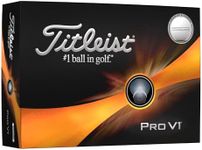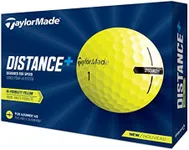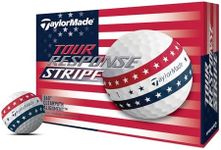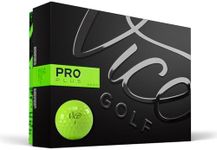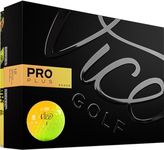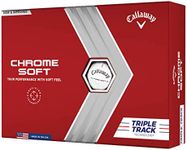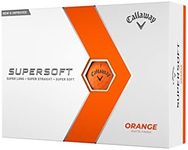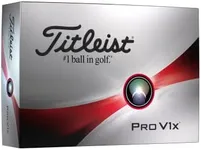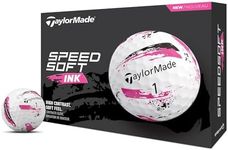Buying Guide for the Best Hot Golf Balls
Choosing the right golf ball can significantly impact your game. The right ball can help you achieve better distance, control, and feel, which are crucial for improving your performance on the course. When selecting a golf ball, consider your playing style, skill level, and the conditions you typically play in. Here are some key specifications to consider when picking the best golf ball for you.CompressionCompression refers to how much the golf ball deforms under pressure. It is important because it affects the ball's distance and feel. Low compression balls (below 70) are softer and compress more easily, making them ideal for players with slower swing speeds who need more distance. Medium compression balls (70-90) offer a balance of distance and control, suitable for average swing speeds. High compression balls (above 90) are firmer and provide more control and less spin, ideal for players with faster swing speeds. Choose a compression level that matches your swing speed to optimize performance.
Cover MaterialThe cover material of a golf ball affects its durability, feel, and spin. There are two main types: Surlyn and Urethane. Surlyn covers are more durable and provide less spin, making them suitable for beginners and those looking for more distance. Urethane covers offer a softer feel and more spin, which is beneficial for advanced players who need better control around the greens. Consider your skill level and what you prioritize in your game when choosing the cover material.
DimplesDimples on a golf ball influence its aerodynamics, affecting lift and drag. This is important because it impacts the ball's flight and distance. Most golf balls have between 300 and 500 dimples. Balls with fewer dimples tend to have a higher trajectory and more carry, while those with more dimples have a lower trajectory and more roll. If you need more distance and a higher flight, opt for a ball with fewer dimples. For more control and a lower flight, choose a ball with more dimples.
Spin RateSpin rate refers to how much the ball spins when hit. It is crucial for controlling the ball's flight and behavior on the green. Low spin balls reduce side spin and help keep shots straighter, making them ideal for beginners and those who struggle with slicing or hooking. Mid spin balls offer a balance of distance and control, suitable for intermediate players. High spin balls provide more control and stopping power on the greens, which is beneficial for advanced players who can shape their shots. Choose a spin rate that complements your skill level and playing style.
FeelThe feel of a golf ball refers to how it feels when struck with a club. This is important because it affects your confidence and comfort during play. Soft feel balls provide a more pleasant sensation and are preferred by players who prioritize touch and control, especially around the greens. Firm feel balls offer more feedback and are preferred by players who prioritize distance and a more solid impact. Consider what aspect of your game you value more when choosing the feel of your golf ball.
